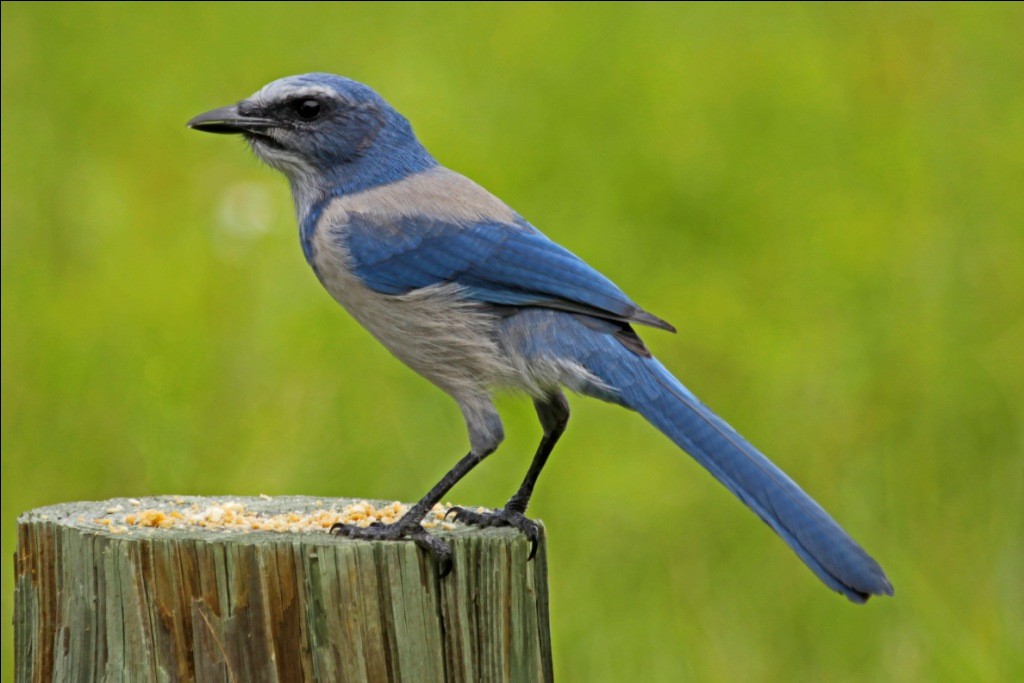Florida Scrub-jay
A species of Scrub Jays Scientific name : Aphelocoma coerulescens Genus : Scrub Jays
Florida Scrub-jay, A species of Scrub Jays
Botanical name: Aphelocoma coerulescens
Genus: Scrub Jays
Content
Description People often ask General Info
Description
The florida Scrub-jay is named after its preferred habitat in Florida scrub brush. These birds forage on the ground for insects, seeds, and even snakes and mice. Due to habitat loss in their natural environments, the florida Scrub-jay is considered a vulnerable species. Its population has declined largely due to human interference.
Size
28 cm
Life Expectancy
15 years
Nest Placement
Tree
Clutch Size
1 - 6 eggs
Incubation Period
1 - 2 broods
Number of Broods
16 - 21 days
Nestling Period
12 - 25 days
Feeding Habits
Florida Scrub-jay forage on the ground for insects, acorns, berries, and small vertebrates like snakes and mice, and accept peanuts from humans. They employ their bills to dismember prey, hammer acorns, which they cache in soil or foliage for later consumption, often covering their stores with leaves or twigs. Caching, up to 8,000 acorns in fall, they also monitor and recache. Human-fed florida Scrub-jay may breed earlier, risking offspring's food availability, primarily caterpillars, required for late spring/summer fledgling sustenance.
Habitat
The florida Scrub-jay primarily inhabits Florida's scrublands, favoring low-growing oak scrub and scrubby flatwoods on sandy ridges, where the vegetation typically remains under 6.5 feet tall. These birds prefer open areas with patches of bare sand within these vegetative communities. Crucial plant species include various oaks like myrtle, Archbold, sand live, and Chapman, as well as understory plants like rusty lyonia and Florida rosemary. They are sensitive to habitat changes, especially those caused by fire suppression, which can lead to denser and taller scrubs unsuitable for their occupancy.
Nest Behavior
Both male and female florida Scrub-jay collaborate in nest-building, with the female more engaged in shaping the nesting cup. The timing of nest construction, egg-laying intervals, and details on how the florida Scrub-jay parents nurture their chicks remains specified to ensure accuracy.
Nest Characteristics
Florida Scrub-jay's nest is situated on the edge of low shrubs, often in sand live oaks beneath dense greenbrier vines or leaf clumps, around 3 feet above ground. Constructed with oak twigs and fibers from saw palmetto and cabbage palm, the outer basket is formed by larger twigs, while the inner basket features smaller twigs and fibers.
Dite type
Omnivorous
People often ask
General Info
Feeding Habits
Bird food type
Bird Feeder Type

Platform
Behavior
Florida Scrub-jay exemplify curiosity and sociability, often seen hopping robustly along the ground amid their oak scrub habitats. These birds are highly territorial and maintain year-round family units comprising adults and offspring who cooperate in vigilance, food gathering, and kin care. Perching vertically on branches, florida Scrub-jay also engage in short, direct flights, while avoiding flight above non-scrub areas. Unique to florida Scrub-jay is their sentinel system for predator surveillance. During mating, florida Scrub-jay exhibit intricate displays involving undulating flights and ground dances. Known for acorn caching, florida Scrub-jay also display elements of human interaction, such as feeding on provided peanuts.
Species Status
The Florida scrub jay was officially listed as a threatened state species by Florida Fish and Wildlife Conservation Commission in 1975 and it was listed as a threatened federal species by the United States Fish and Wildlife Service in 1987. In 1993, there were estimated to be 4000 breeding pairs left in the wild. Despite the protections, the Florida scrub jay is still thought to be on the decline. 
Scientific Classification
Phylum
Chordates Class
Birds Order
Perching birds Family
Crows and jays Genus
Scrub Jays Species
Florida Scrub-jay 